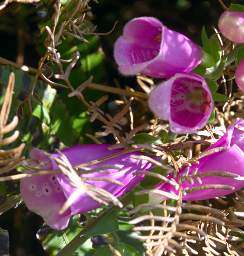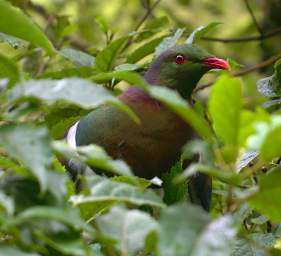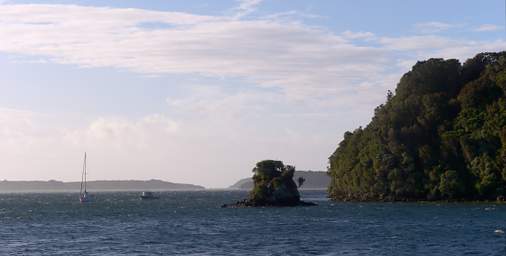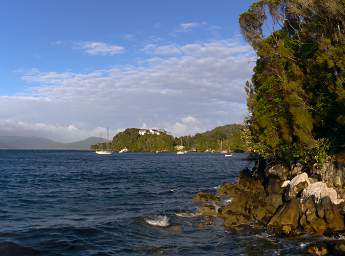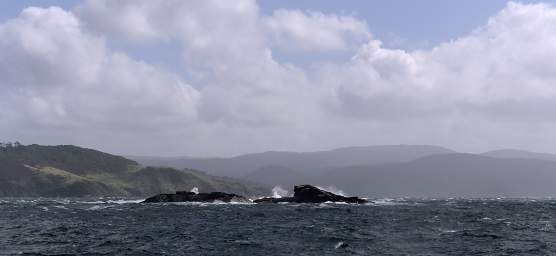Exploring Stuart Island
Rain, Wind, and the Sea -- A Hard Place to Make a Living
February, 2016
Click on any image for a larger view;
Contact garya at this domain if you would like the high quality image for printing
We entered New Zealand from
Hobart, Tasmania (Australia) at
Christchurch,
where we got a thorough agricultural inspection.
Since we were going to be doing some camping,
we had brought our sleeping bags and our mountain tent.
The customs folks took the tent into the back room and went over it with a fine-toothed comb
looking for invasive bugs and plants.
They checked the tent, the groundcloth, the fly,
the poles, and the stakes.
I put them way up for being thorough --
New Zealand has been devastated by invasive species.
They didn't find anything but "a few" dead bugs, so that was good.
They also inspected the bottoms of our shoes.
Then we hopped another plane to Invercargill, at the very bottom end of the South Island.
We were met at the airport by our hosts,
Ian and Jenny Gamble from
Bushy Point Fernbirds
We were due to catch a boat across to Stewart Island the next day,
but we had time in the evening for a short walk through the wild area around our lodging.
Ian pointed out new indigenous birds and some flowers for us.
The fuchsia we see commonly in the United States is a small plant,
usually hanging in a container and trailing down over the side with bright red flowers.
Like the one in the photo below.
But wow, they have a native one which is a tree!
(Photos later on)
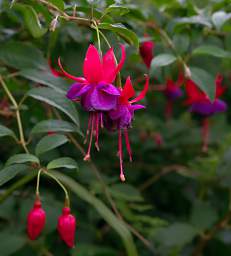 |
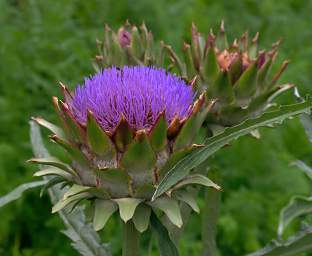 |
 |
| Fuchsia |
Flower Xxx Purple |
Flower Xxx Orange |
One of the birds we saw a lot of in New Zealand is the Fantail,
known as Piwakawaka in Maori.
Maori names are crazy -- they often repeat the last one or two syllables.
I asked a woman at the Maori cultural center in Rotorua why that was so
and she didn't know,
and even didn't seem to notice it until I pointed it out to her.
In any case, it makes it easier to spell if you don't have to remember the whole thing
and just learn to repeat the last part...
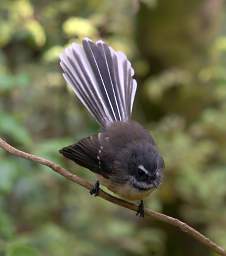 |
 |
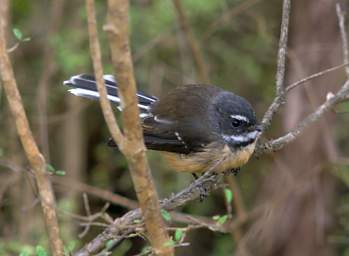 |
| Fantail (Piwakawaka) Rhipidura Fuliginosa |
The Fernbird was really well camoflaged,
and we probably would have never gotten a good look at it
without Ian's help.
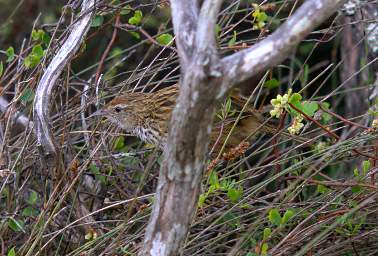 |
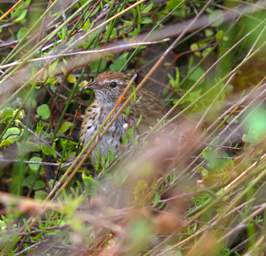 |
| Fernbird (Matata) Bowdleria Punctata |
The ride over to Oban, the main town on Stewart Island, was rough.
40 plus knot winds, although the seas didn't seem all that rough
which surprised me.
I expected the waves to be bigger, as they had the whole ocean from Australia to gather steam.
We arrived in the rain,
something I suspect is not too uncommon...
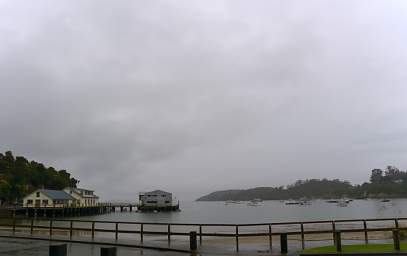 |
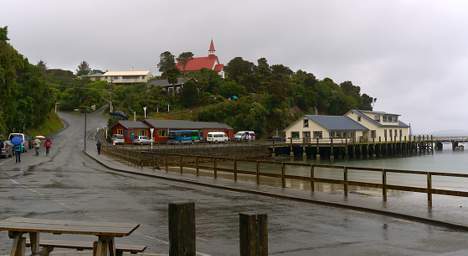 |
| Oban, Stewart Is |
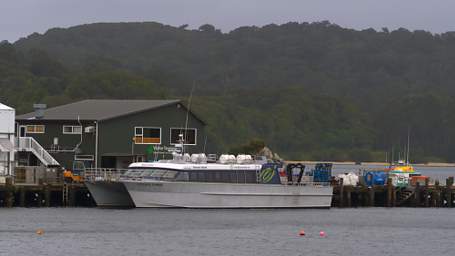 |
 |
| Ferry |
We were staying at
Allan's Base Camp.
We headed over to the store where we bought a few groceries and then
called Allan and he came down and gave us a lift up to the camp.
Our "camp" was a small plywood cabin, spare but dry.
Given the weather, we were glad we reserved it.
Our tent is pretty water-repellent, but it was a lot more comfortable in the cabin.
The bathroom was in the communal hut a short distance away.
The communal area had a small wood-burning stove
and a gas stove for cooking.
With the rainy weather, we were happy to have the wood stove to help dry things out
and warm us up a bit.
While at the camp we met a young Australian woman who had been backpacking a lot
and had just arrived after a 50 km trip.
She had a soaked tent and
a good blister on top of another blister;
we gave her some moleskin.
 |
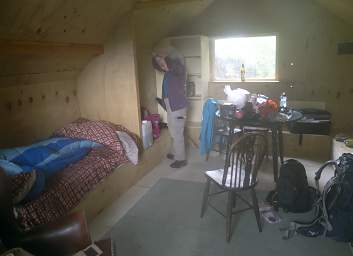 |
| Our Cabin at Allan's Base Camp |
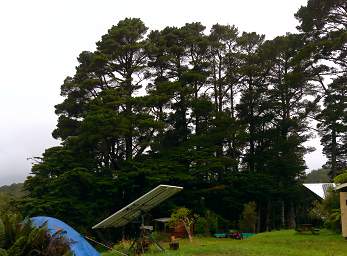 |
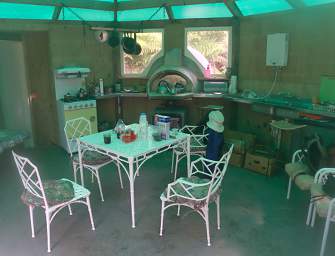 |
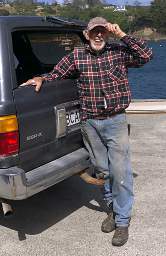 |
| Allan's Base Camp |
Common Area |
Allan |
There are a number of trails around Stuart Island in the vicinity of the main town, Oban.
We explored some of them in the dreary weather.
The woods felt a bit elvin, with lots of moss.
Despite it still being late summer (the equivalent of northern hemisphere late August),
many of the trees had lost their leaves.
After a bit of walking we usually ended up on the coast,
staring out to sea, with small islets squatting out there in the mist.
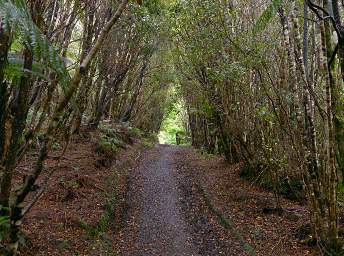 |
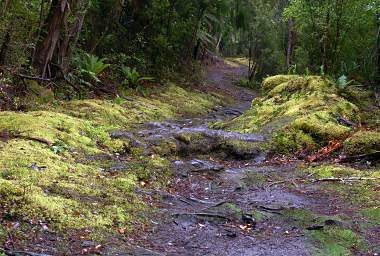 |
| Woods |
Moss |
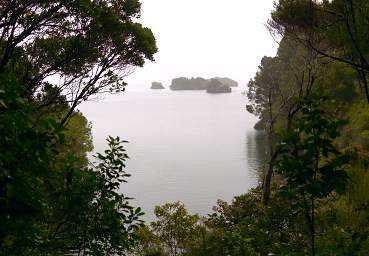 |
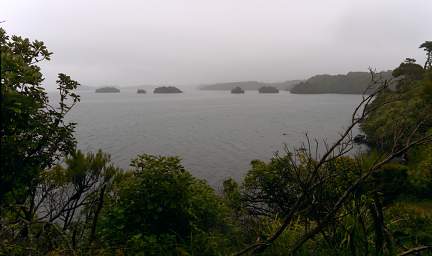 |
| Islets |
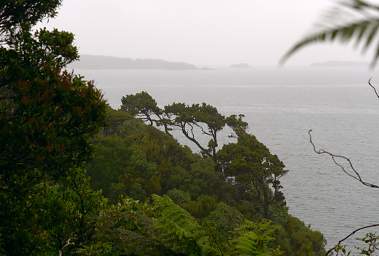 |
| Windblown Tree |
One of the trails was named the "Fuchsia Trail";
we were expecting a walk amongst hundreds of bright red and purple blossoms.
We were much surprised to discover that the predominant native
fuchsia here
is a large deciduous tree with a shedding bark.
Unfortunately, they were not in bloom.
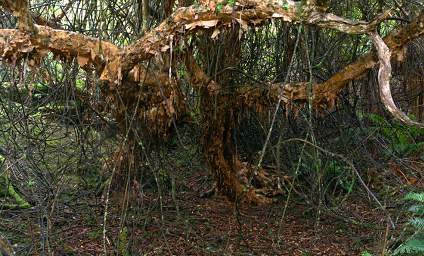 |
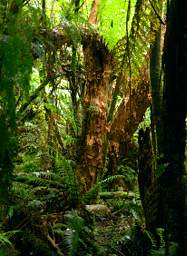 |
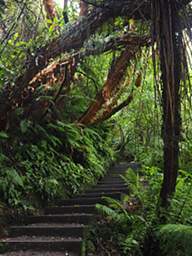 |
| |
Photo by Dona |
| Tree Fuchsia |
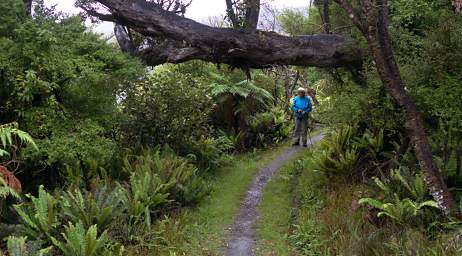 |
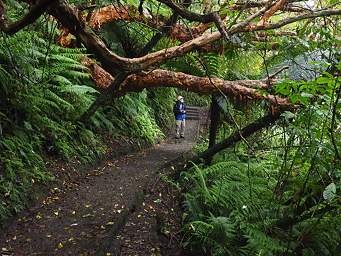 |
| |
Photo by Dona |
 |
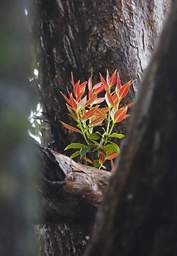 |
| Anchorage |
Plant Xxx Red
Photo by Dona |
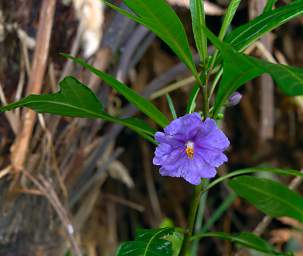 |
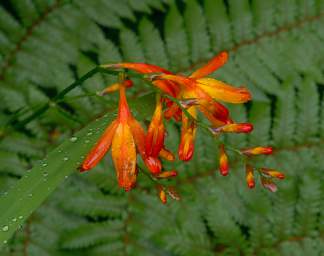 |
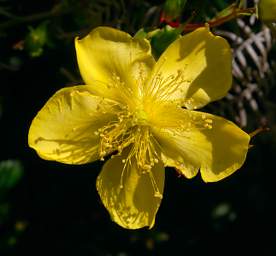 |
| Flower Xxx Blue |
Flower Xxx Orange |
Flower Xxx Yellow |
The small creeks flowed a rich brown from all the tanin leeching out of the forest.
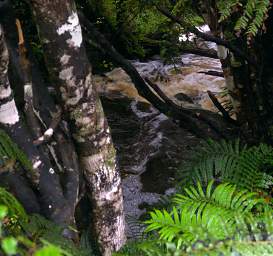 |
| Creek |
We saw a few
Pied Shag,
known as Karuhiruhi in Māori,
down by the water in secluded areas;
and quite a few
New Zealand Pigeons,
also known as the Kereru up in the woods near open land.
They are one of the largest pigeons in the world,
and were once an easy target for a meal.
Hunting is now prohibited,
but predation by introduced mammals such as feral cats, the
Common Brushtail (Australian) Possum,
Stoats
and
rats
still are a challenge to its recovery.
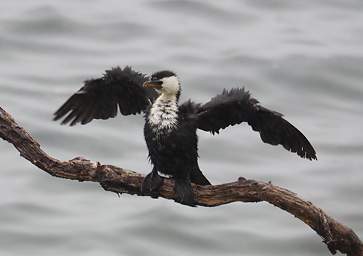 |
Pied Shag (Phalocrocorax Varius)
Photo by Dona |
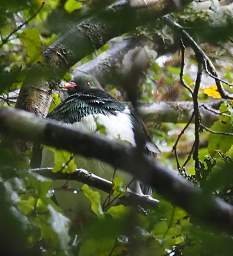 |
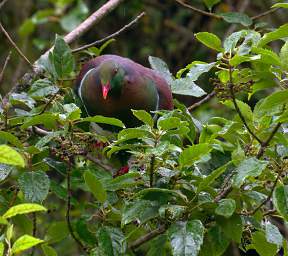 |
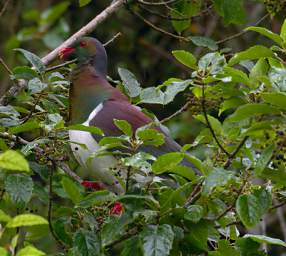 |
| Photo by Dona |
| New Zealand Pigeon (Kereru) (Hemiphaga Novaeseelandiae) |
At the end of one of our hikes
we saw a group of backpackers heading our way.
They'd clearly been out in the rain for a few days.
We expected to see a bunch of young people and
were pleasantly surprised to see that they were all about our age
and some probably older.
Something you don't see on a regular basis in this country,
and a poke in the eye concerning the health of many in the U.S.
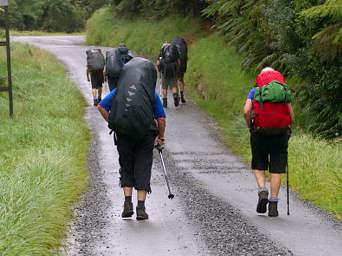 |
| Old Backpackers |
The Tui
is another fairly common native bird in New Zealand.
They are hard to mistake for anything else with their white throat tufts,
and look rather comical at times as if taking on airs.
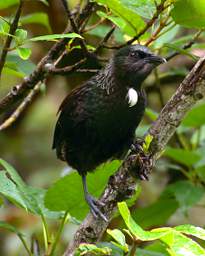 |
| Tui (Prosthemadera Novaeseelandiae) |
We heard
bellbirds
fairly often, but they were elusive and difficult to get pictures of.
Their song was delightful.
The bellbird is a honeyeater,
and provides the pollination service that hummingbirds do in the Americas.
But unlike hummingbirds, they also feed of fruits.
So they help plant propagation in two ways,
by pollination and by seed dispersal.
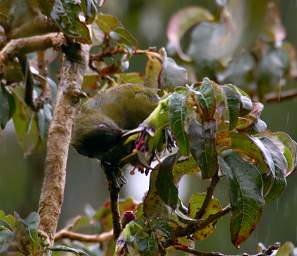 |
 |
| Bellbird (Korimako Anthornis Melanura) |
We found
Rata
trees in bloom and were delighted.
Unfortunately they are in decline due to browsing by introduced possums,
which can kill a tree in a few years.
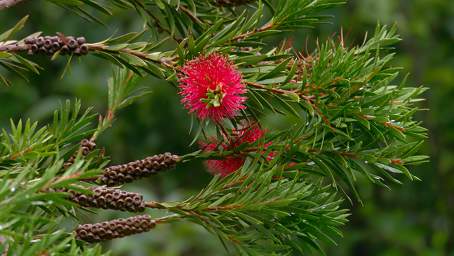 |
| Rata Metrosideros |
Returning from one of our hikes we passed a house with a great colorful garden.
These were probably not native flowers but they were great splashes of impressive color.
 |
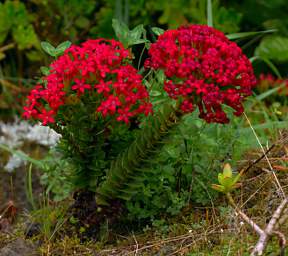 |
 |
| Flower Xxx Blue |
Flower Xxx Red |
Flower Xxx Pink |
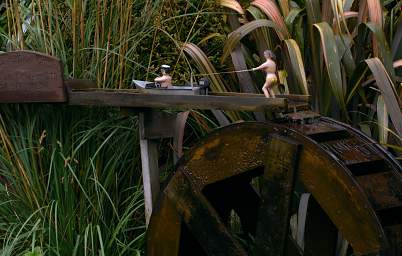 |
| Waterwheel Model |
Whenever we were near the waterfront in the town of Oban we saw lots of waterbirds.
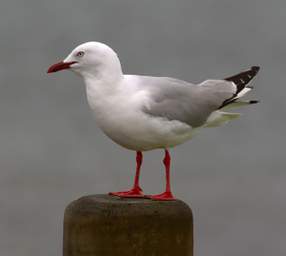 |
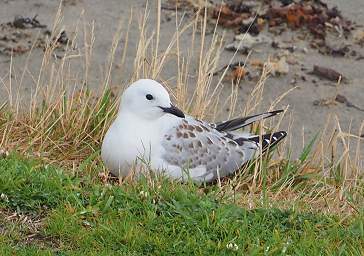 |
| Red Billed Gull (Larus Novaeholiandiae Scopulinus) |
Black Billed Gull (Larus Bulleri)
Photo by Dona |
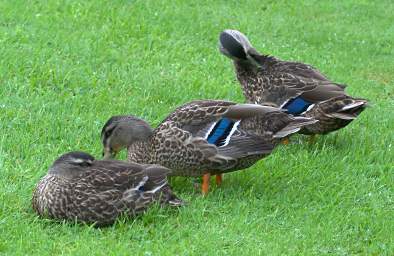 |
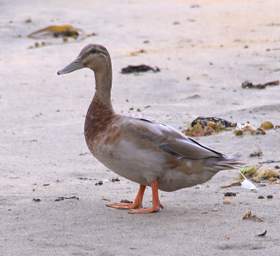 |
| Mallard (Anas Platyrhynchos) F |
Xxx Duck |
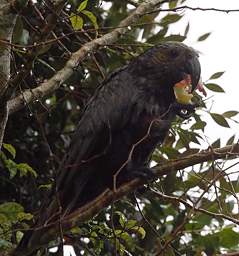 |
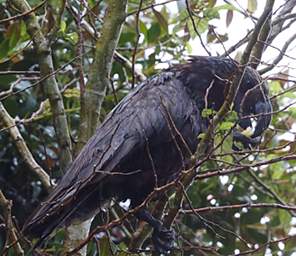 |
Kaka (Nestor Meridionalis)
Photo by Dona |
 |
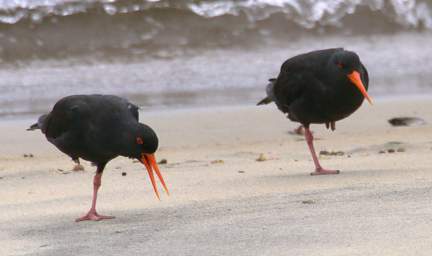 |
| Variable Oystercatcher (Haematopus Ostralegus Finschi) |
New Zealand is famous for its "Christmas tree," the
Pōhutukawa (Māori) Metrosideros excelsa ;
so named because of its bright red blossoms which make it naturally look like an artificially decorated tree.
They were in bloom and lived up to their name.
The Pōhutukawa is a member of the
Myrtle family.
The trees are hardy in harsh coastal environments,
growing up to 20m high on rugged rock outcrops.
It usually has multiple trunks and entwined branches.
While now found over a greater range,
they grew naturally only in the tropical climate on the northern two-thirds of the North Island.
Like many endemic plants in New Zealand,
it is threatened by the introduced
brushtail possum.
 |
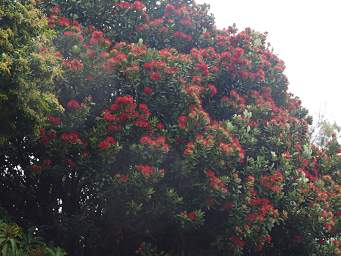 |
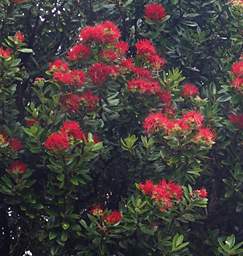 |
Pohutukawa (Metrosideros excelsa)
Photo by Dona |
 |
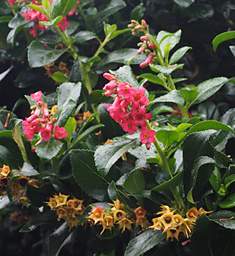 |
Flower Xxx Mistletoe?
Photo by Dona |
Flower Xxx Red
Photo by Dona |
New Zealand evolved with only one mammal, a bat.
As a consequence, its native flora and fauna evolved without any pressure from predatory mammals.
Unfortunately, even the earliest humans brought terrestrial mammals with them;
those mammals found easy prey in the native birds and other wildlife.
As a result, most native birds in New Zealand are endangered or extinct.
Imagine the
Moa,
a bird that stood two meters high at the back,
which could reach three meters up in a tree for food!
Wherever we went in natural areas of New Zealand,
we saw extensive predator-control programs to try to reduce the damage of some of the worst offenders
such as stoats, weasels, and rats.
But it is impossible to control such pests on land masses as large as the main islands of New Zealand.
However, on smaller islands it is possible to drastically reduce or eleminate some predators,
and when this is done the native species are sometimes able to bounce back or thrive if re-introduced.
One of the main things we wanted to do on Stuart Island was to spend a day on a smaller nearby island,
Ulva Island,
which is mostly intact and has more native plants and birds.
We arranged for a boat to take us over;
our ticket was a large leaf with "Ulva Island Ferry" written on the underside.
The day dawned overcast with high winds.
The ferry was a small boat with a single crew, the captain.
There were about eight of us when we loaded up.
We headed up along the shoreline into the wind and waves,
trying to stay out of the rough water in the main channel.
Then we turned and quartered downwind as we crossed over to Ulva Island.
Unfortunately, we did not have a deck hand to assist in docking,
which made it pretty difficult to get the boat in position and secure lines to the dock at the same time.
The captain decided it was unsafe and returned.
Shortly after he left us off where we began
another slightly larger boat with two hands instead of just one showed up and agreed to take us over as well.
They were able to dock ok, although it was pretty rough.
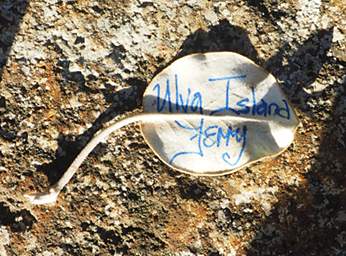 |
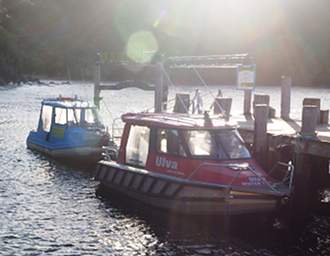 |
Ulva Island Ferry Ticket
Photo by Dona |
Ulva Island Ferry
(The smaller one that didn't make it)
Photo by Dona |
The day started clear but windy, and we set out to explore.
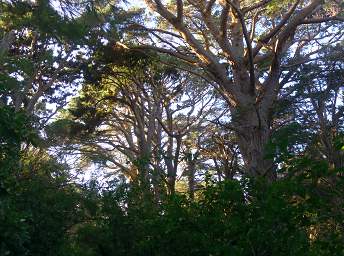 |
| Tree Xxx |
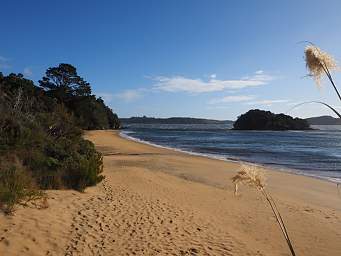 |
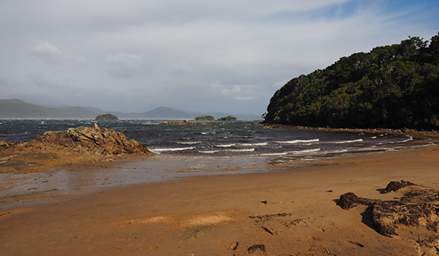 |
Sydney Cove
Photos by Dona |
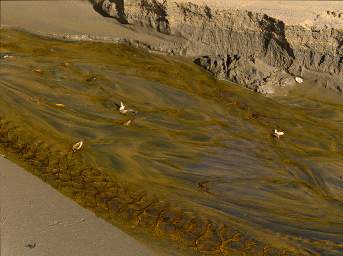 |
 |
| Water and Sand |
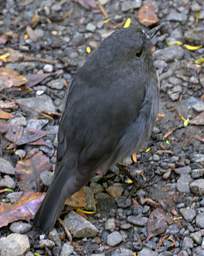 |
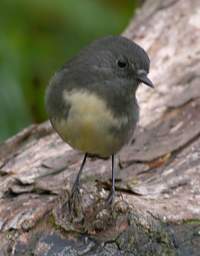 |
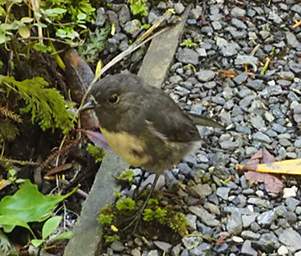 |
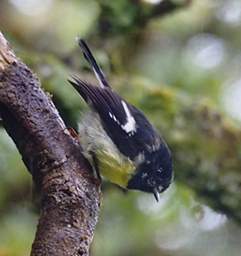 |
| |
Photo by Dona |
Photo by Dona |
South Island Robin
(Petroica Australis Australis) |
South Island Tomtit
(Petroica Macrocephala Macrocephala) |
 |
Blackbird (Turdus Marula)
Photo by Dona |
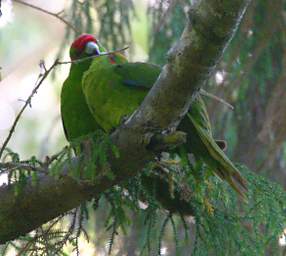 |
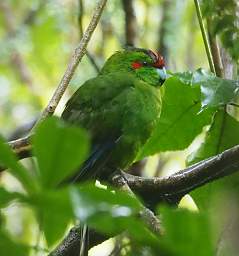 |
| |
Photo by Dona |
| Red Crowned Parakeet (Kakariki) (Cyanoramphus Novae Zelandiae)
|
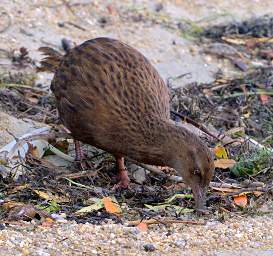 |
 |
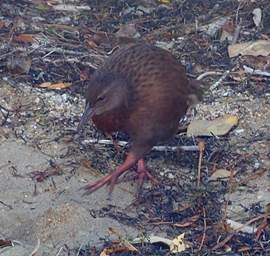 |
| |
Photo by Dona |
| Weka (Gallirallus Australis) |
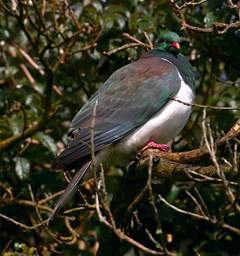 |
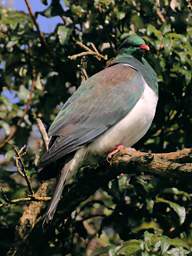 |
| New Zealand Pigeon (Kereru) (Hemiphaga Novaeseelandiae) |
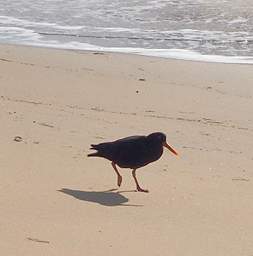 |
Pied Oystercatcher (Haematopus Unicolor)
Photo by Dona |
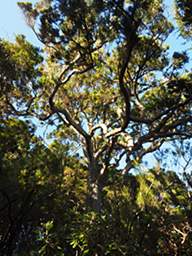 |
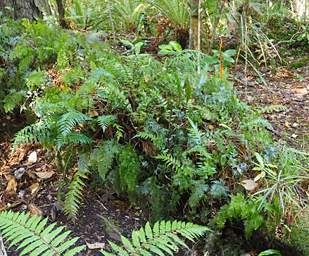 |
 |
Tree Xxx
Photo by Dona |
Ferns
Photo by Dona |
Unfortunately, the weather deteriorated into pounding rain and high winds,
and we (and everyone else) had to leave the island early.
Upon returning, we had lunch in a small eatery called the "Kai Kart"
which appeared to be made from an old rail car.
The kitchen was barely big enough for the two people manning it to move around in,
but the food was delicious
and the burgers were huge!
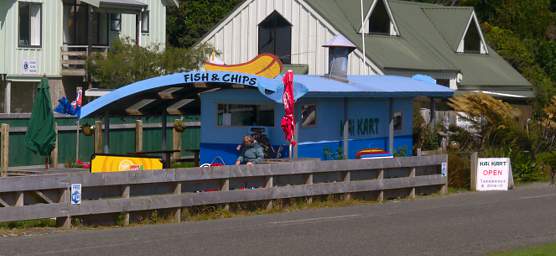 |
| Kai Kart |
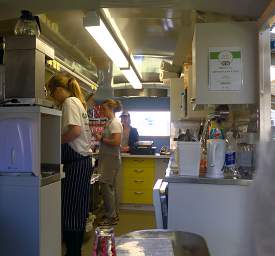 |
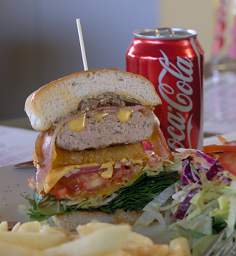 |
| Inside Kai Kart |
Kai Kart Burger |
When we caught our boat back to the South Island,
the wind was still howling and the seas were still rough.
We spent a night in
Invercargill
and the next day headed up to
Dunedin,
where we would
catch the train to Middlemarch
and the start of our
bike ride.





































